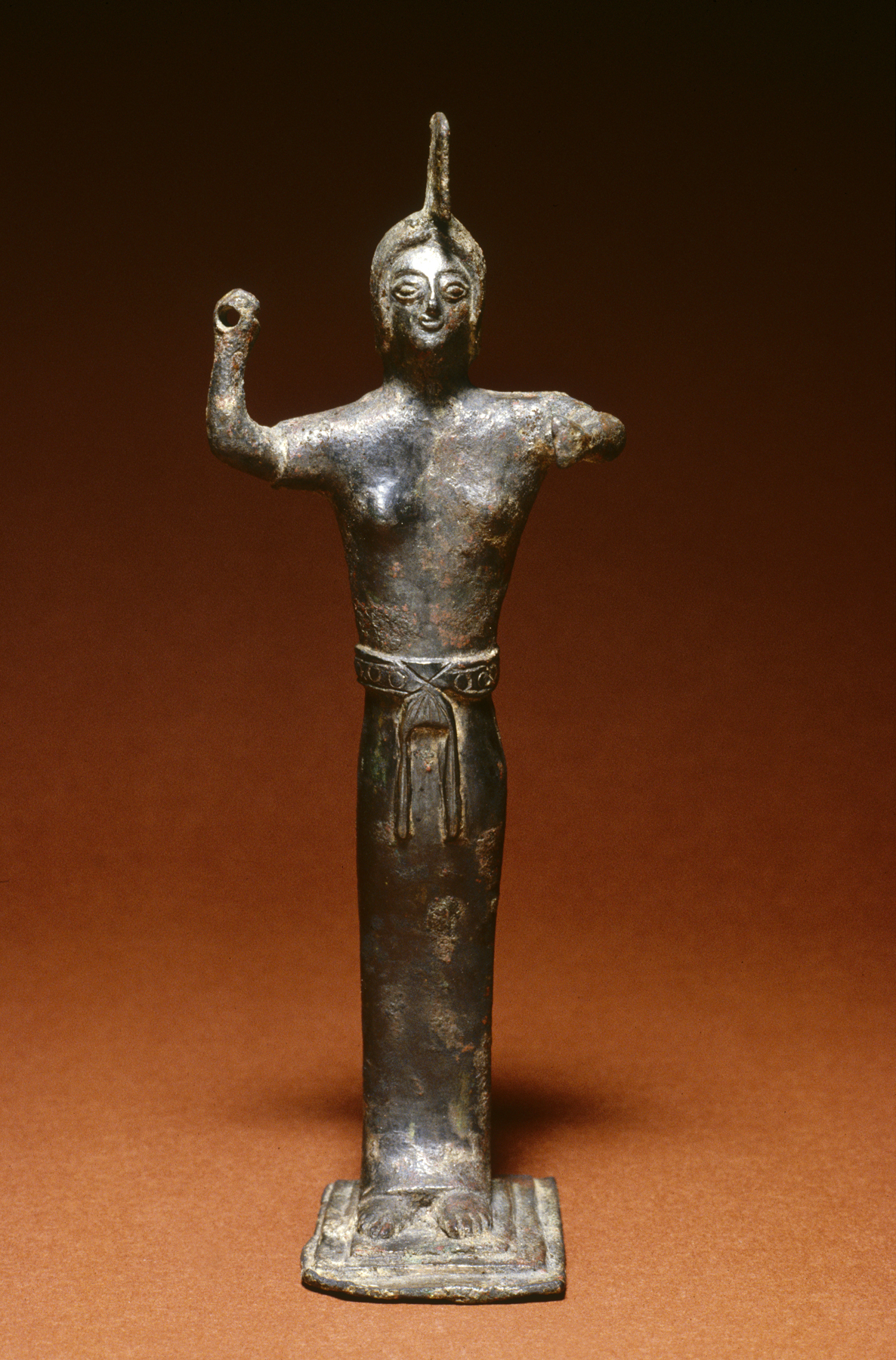Palladion Athena
(Ancient Greece )
This type of statuette is known as the "Palladion" Athena, after a famous statue of the goddess at Troy, which, according to tradition, was stolen by the Greeks when they captured the city in the 13th century BC. Images of the "Palladion" are characterized by flat, simply modeled surfaces and a stiff, forward-facing pose. These figures are meant to depict a powerful early cult image, instead of a lively, active goddess.
Provenance
Provenance (from the French provenir, 'to come from/forth') is the chronology of the ownership, custody, or location of a historical object. Learn more about provenance at the Walters.
Leon Gruel, Paris [date and mode of acquisition unknown]; Henry Walters, Baltimore, 1929, by purchase; Walters Art Museum, 1931, by bequest.
Exhibitions
| 1982 | Men and Gods from Ancient Greece. Palais des beaux-arts (Brussels, Belgium), Brussels. |
Conservation
| Date | Description | Narrative |
|---|---|---|
| 7/24/1968 | Treatment | loss compensation |
| 3/23/1982 | Loan Consideration | examined for loan |
| 8/17/1982 | Treatment | cleaned; coated |
| 4/10/1990 | Loan Consideration | examined for loan |
| 6/25/2001 | Treatment | other |
| 3/8/2011 | Treatment | cleaned |
Geographies
Greece, Sparta (Place of Origin)
Measurements
H: 6 13/16 x W: 2 3/8 x D: 2 1/8 in. (17.3 x 6 x 5.4 cm)
Credit Line
Acquired by Henry Walters, 1929
Location in Museum
Accession Number
In libraries, galleries, museums, and archives, an accession number is a unique identifier assigned to each object in the collection.
In libraries, galleries, museums, and archives, an accession number is a unique identifier assigned to each object in the collection.
54.780


